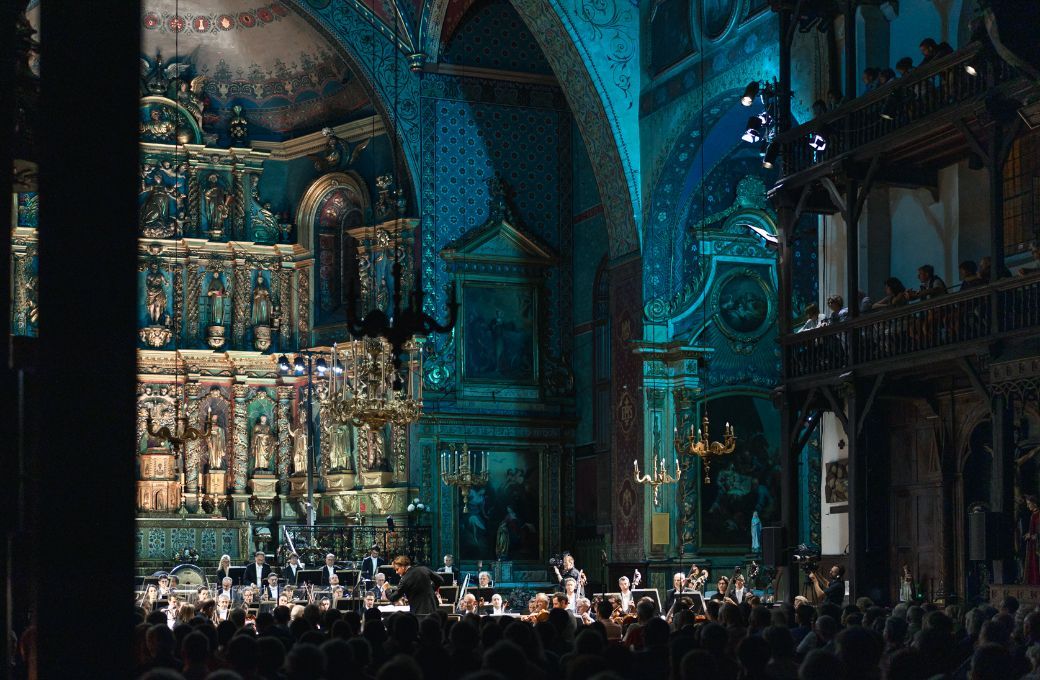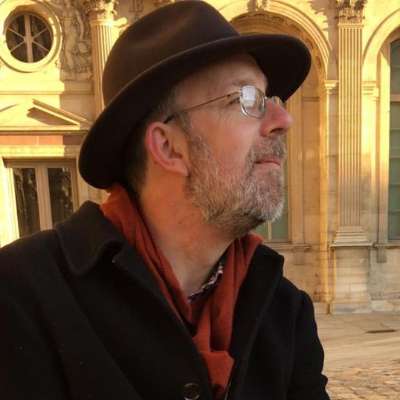Maurice Ravel was born in Ciboure, a tiny commune in the Pyrénées-Atlantiques just ten miles from the Spanish border. It’s also signposted in Basque as Ziburu. Ravel’s mother, Marie Delouart, was of kaskarotes stock, a racial minority of Basque gypsy origin established in the coastal area, especially in neighbouring Saint-Jean-de-Luz (or Donibane Lohizune), so it’s little wonder that Ravel could conjure an authentically Spanish flavour to his music. Much of it was in evidence at this knockout concert by the Orchestre National de France.

This was the orchestra’s first concert with Philippe Jordan since he was announced as their next Music Director earlier this year. TV cameras were out in force and there was a real sense of occasion, one of the hottest tickets of the festival. Even during the interval, would-be attendees were holding up signs looking for tickets.
The settings for these concerts just get more and more outrageously stunning. This evening’s took place at the Église Saint-Jean-Baptiste with its monumental 17th-century altarpiece in carved gilded wood. The nave is framed by three-tiered galleries – precarious viewing perches – and all that wood makes for a wonderful acoustic, far from the over-reverberant stone that make English churches and cathedrals so unsuitable for much orchestral music.
Louis XIV married the Spanish Infanta Maria Theresa here in 1660 and the golden glow that lit the Pavane pour une infante défunte seemed particularly apt, as did the equally glowing performance it received to open the concert, taken by Jordan at a stately pace. The treacherous horn solo was not quite flawless, but much radiance was in evidence.
Jordan let loose in the three second half works. Perfumed strings evoked sultry evenings at the start of the Rapsodie espagnole before erupting into a fiesta of colour, strutting trumpet and hip-swinging rhythms.
It’s an exaggeration to say that the cicadas earned this concert its fifth star, but their timing was impeccable. At 21:30, they chirruped into action just as the Alborada del gracioso strummed into life. Instant picture postcard Spain: a clatter of castanets, bouncing spiccatos and Marie Boichard’s smoky bassoon solo.
“I’ve written only one masterpiece,” Ravel drily told Arthur Honegger. “Unfortunately, there’s no music in it.” But virtually every woodwind and brass player gets a solo in Boléro and the ONF principals did a fabulous job, especially the cavernous alto saxophone and a louche trombone, all paced by the snare drummer seated just in front of the conductor. For his part, Jordan cranked up the volume as the cataclysmic final bars tumbled forth.
In between came the Piano Concerto in G major, the only non-Spanish work in the programme, but a chance for festival director Bertrand Chamayou to shine in the spotlight. He bustled through the opening movement at a lively pace, spick and span, before a limpid Adagio assai, Jordan gazing on adoringly. Nancy Andelfinger’s tawny cor anglais tones duetted tenderly with the piano before a finale that was sassy, but never vulgar.
Chamayou had hot-footed it to the church, along with many of us in the audience, from the early evening recital at the Couvent des Récollets in Ciboure, centred around the Piano Trio in A minor. Chamayou, Corina Belcea and Jean-Guihen Queyras made up a classy trio, their sinewy, lithe string tone given tremendous clarity in the splendid acoustic of the converted chapel. Belcea and Queyras were locked in eye contact in the wistful opening strains, all three sparring in the playful Pantoum before letting rip in the energetic finale.
Belcea and Queyras duetted in the rarely heard Sonata for Violin and Cello, its spiky pizzicatos mirroring the second movement of the string quartet, before Queyras was joined by six cellists from the Académie Ravel 2025 arching around the soloist in a semi-circle for Pierre Boulez’s Messagequisse. A mesmerising work, full of tremolos and buzzing like angry bees, it’s a fine example of Chamayou’s adventurous programming, expanding this festival’s horizons beyond the home-town boy.
Mark’s press trip was funded by the Festival Ravel.


